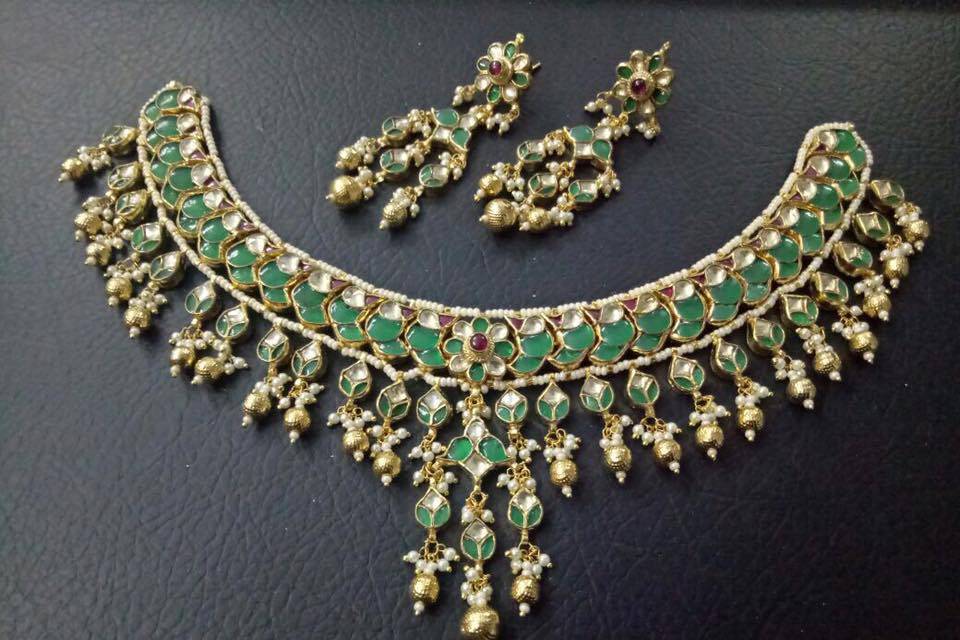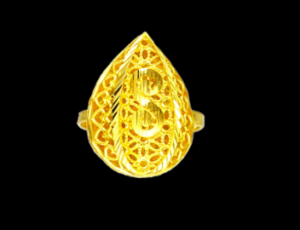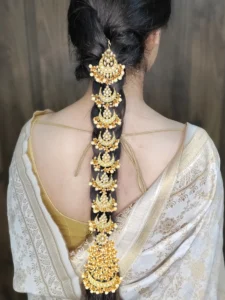Indian bridal jewellery has long been a cornerstone of cultural identity and tradition in the country. At KundanMala Jewels, we believe that jewellery is more than ornamentation—it’s a legacy passed down through generations. Deeply rooted in history, Indian bridal jewellery has evolved significantly over centuries while retaining its symbolic and aesthetic value. Today, Indian bridal jewellery continues to be a highlight of every wedding ceremony, representing more than just beauty—it reflects lineage, spirituality, and social status. From ancient times to contemporary fashion, the journey of Indian bridal jewellery tells a story of change, creativity, and continuity.
Traditional Roots of Indian Bridal Jewellery
Historically, Indian bridal jewellery was crafted with deep symbolism and cultural meaning. Pieces like the maang tikka, nose ring (nath), choker, kamarbandh, and payal were not just decorative; they signified various stages of a woman’s marital status and societal position. Gold, being considered auspicious, was the dominant metal, while gemstones like rubies, emeralds, and uncut diamonds (polki) were widely used.
The traditional designs were heavily influenced by regional art and architecture. For instance, South Indian brides favored temple jewellery inspired by deities and temple carvings, whereas North Indian brides wore elaborate kundan and jadau sets. These styles laid the foundation for what we now celebrate as Indian bridal jewellery.

The Role of Ritual and Symbolism
Indian bridal jewellery has always played an integral role in wedding rituals. Each piece, from the mangalsutra to the toe rings, held a ritualistic meaning. The jewellery wasn’t just ornamental but was believed to channel positive energy and protect the bride from negative forces.
For example, the bangles symbolize prosperity and safety in the new home, while the nath is worn to honor Devi Parvati, the goddess of marriage. These ritualistic purposes added layers of significance to Indian bridal jewellery, making it deeply personal and spiritual.
Modern Interpretations and Changing Preferences
As fashion trends have evolved, so has Indian bridal jewellery. Modern brides today look for a balance between tradition and contemporary style. While some still choose to wear heirloom pieces, many opt for lighter, versatile jewellery that complements their outfits and allows movement and comfort.
Designers now incorporate contemporary elements like rose gold, pastel gemstones, and fusion styles, blending Western aesthetics with Indian motifs. Customization has also become popular, allowing brides to personalize their Indian bridal jewellery to reflect their unique story and taste.
The Rise of Minimalism and Fusion Styles
A growing number of brides are now embracing minimalism. Instead of the heavy, ornate pieces of the past, today’s Indian bridal jewellery often features sleek lines, minimal embellishments, and elegant finishes. This trend aligns with the modern bride’s desire for comfort, sustainability, and the ability to reuse jewellery post-wedding.
Fusion jewellery is another rising trend, where traditional elements are combined with global styles. This allows Indian bridal jewellery to be worn beyond the wedding day, making it more functional and versatile while still honoring cultural roots.
Impact of Technology and Accessibility
Advancements in technology and digital media have made Indian bridal jewellery more accessible than ever. Brides can now browse collections online, book virtual consultations, and even try on pieces using AR tools. This digital transformation has widened the market and made shopping for bridal jewellery a more informed and personalized experience.
Furthermore, newer crafting techniques have improved the durability and finish of jewellery, making it more refined and lightweight without compromising on the traditional look.
Sustainability and Ethical Choices
With growing awareness around sustainability, modern Indian bridal jewellery is also reflecting ethical choices. Brides are increasingly interested in ethically sourced gemstones, recycled gold, and artisanal craftsmanship. This shift highlights the importance of conscious consumerism in the luxury space.
Many designers now focus on sustainability, creating pieces that are both environmentally friendly and culturally meaningful. This evolution ensures that Indian bridal jewellery not only honors tradition but also respects contemporary values.
Cultural Representation in Contemporary Jewellery
Despite modernization, Indian bridal jewellery remains deeply tied to regional identity. Designers continue to draw inspiration from local art forms, folk tales, and historical references. This keeps the cultural essence alive while allowing room for innovation.
Whether it’s the Rajasthani borla or the Bengali shakha pola, Indian bridal jewellery still celebrates the rich diversity of the country. Each piece tells a story of community, heritage, and pride.

Conclusion
The journey of Indian bridal jewellery from ancient times to today reflects a beautiful evolution of style, sentiment, and significance. While the materials and designs may have changed, the emotional and cultural value remains as strong as ever.
At KundanMala Jewels, we take pride in blending tradition with innovation, offering a collection that speaks to every bride’s heritage and individuality. For those seeking authenticity and elegance, our expertly crafted pieces are a testament to India’s timeless jewellery legacy.
Whether you’re drawn to vintage designs or modern minimalism, your bridal adornments should reflect your unique story. And if you’re looking for guidance and craftsmanship you can trust, the best jewellers in Dehradun are here to make your special day truly unforgettable.
Indian bridal jewellery is not just an accessory—it’s a celebration of history, identity, and eternal beauty.






